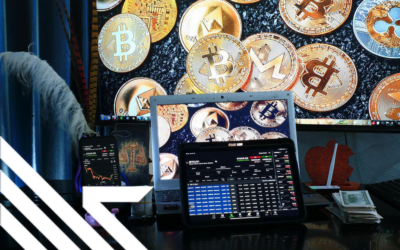Can Bitcoin’s hard cap of 21 million be changed?
Yes, in theory. However, in practice, it is an extremely difficult, if not impossible, endeavor for anyone to undertake.
Before looking at how the cap can be removed and why it is a difficult process, let’s look at the purpose it serves.
The 21 million cap defines Bitcoin as a deflationary digital currency. Besides decentralization, this is the other critical feature that differentiates cryptocurrencies from government-issued money.
The cap and inflation
With a hard cap in place, the amount of currency in circulation ceases to be a variable that determines the prices of goods and services in an economy. More importantly, the currency secures the value stored in it, especially in the long term.
Without a hard cap on the amount of currency that can be printed, in general, the prices of goods and services increase each time more currency is printed, minted, or released into the economy.
This is known as inflation and it happens all the time. Indeed, central banks control the levels of inflations by printing less or more money. However, the general trend over a long time is that inflation goes up.
For example, the dollar had more purchasing power in 1990 than it has in 2022. You could buy more stuff with a dollar in 1990 than you can today. And that is because there are more dollar units in circulation today than three decades ago.
Meanwhile, anyone HODLing Bitcoin believes that its purchasing power will likely increase over time rather than decrease. As a matter of fact, since its launch in 2009, Bitcoin’s price has had a general upward growth.
The value in a deflationary currency like Bitcoin is not at the risk of diluting in the long term, especially because new units are not arbitrarily added into the circulation.
It is important to point out that in the short term, new bitcoins are being added into circulation as an incentive reward to miners. However, the new coins being released are part of the 21 million.
The coins are being released at an emission rate that halves every four years. The last coin is expected to be released in the year 2140. When no more coins are released, the miners will be rewarded with the transaction fees users pay.
It is not exactly known why Satoshi Nakamoto, the designer, and developer of Bitcoin, chose 21 million and not any other number. There are some speculations online, mostly based on Nakamoto’s conversations with early Bitcoin adopters.
How the cap is maintained
The 21 million cap is fixed in the Bitcoin protocol, a set of rules that guides the computers on Bitcoin’s peer-to-peer network. Thanks to the protocol, the nodes on the network share data, understand one another, form consensus, and act together as a unit even though there is no central authority.
The protocol is executed through a core software that each computer on Bitcoin’s peer-to-peer network must install and run. Satoshi Nakamoto coded the first version of the Bitcoin core software and set the rules on which the cryptocurrency functions, including the 21 million hard cap.
Over the years, other core developers have been involved in maintaining the core software, mostly as volunteers. Anyone with blockchain programming skills can contribute to maintaining the Bitcoin core software.
Also, anyone can suggest changes to the core software, including critical aspects such as the 21 million cap. That is done as a Bitcoin Improvement Proposal (BIP).
The person suggesting the change must write a technical document explaining it in detail and publish it on a forum accessible to stakeholders, particularly core developers.
To succeed, the proposer must persuade as many community members as possible. That is because, for the proposal to be accepted, it has to go through some sort of a vote.
However, the vote is not carried out conventionally. I will explain how it is done in a moment.
When the proposer of the change in the core protocol is confident of the support of the core developers and the wider community, they will program a new version of the core software with the changes.
That means, if it is about removing the 21 million hard cap, they will write a Bitcoin Improvement Proposal, persuade the community to accept it and then write the code of a version of the core software with the relevant changes in the protocol.
The vote
When Microsoft upgrades the Windows operating system, it releases it and often compels users to install it. In the case of Windows, a central authority (Microsoft) exists to make the critical decision and compel users to install the new version.
Bitcoin is not like Windows. There is no authority to upgrade the software and compel users to accept the new version. Bitcoin is a community project.
Therefore the final decision is made through a vote. The actual vote is for people with nodes on the Bitcoin network to install and run the new version. If all the nodes run the new version, then it is accepted.
However, it is never that simple.
The soft and hard fork
Two types of changes can be made to the Bitcoin core software; the soft fork type and the hard fork type.
The soft fork type
This is a change to the core software that does not change the protocol enough so that the computers running the new version and those running the old version fail to communicate, collaborate and form a consensus. Minor changes such as how the user interface looks fall into this category.
This type of change to the core software and the protocol happens all the time. Indeed, anyone with the right skills can create their own version of the Bitcoin core software, and it will function perfectly well on the network as long as the protocol in it is similar to what the other versions on the network have.
The hard fork type
The hard fork type change happens when the computers on the network that run the new version cannot communicate, collaborate and find consensus with those still running the old version.
This happens when the new version changes critical aspects of the protocol.
Unless all the nodes on the network agree to migrate to the new version of the core software, the network splits into two independent sections. Because of this, it is important that before such a change to the protocol is implemented, all stakeholders must accept it.
That means when the new version of the core software is released, all the nodes on the network must vote for it by installing and running it. If it is a soft fork change, it is considered a success if most nodes run it.
In the case of a hard fork type, the attempt becomes a disaster for the network if some nodes fail to run the new core software version. Indeed, if a few nodes decline to run the new version of the core software, they will continue the old network while those running the new version branch off to form a new network.
Changing the 21 million is a hard fork change
Changing the 21 million cap is one of the changes to the protocol that will lead to a hard fork. That means for the change to be effective, the entire network (and community) must accept it.
Otherwise, whoever makes the change will either be ignored or have to branch off and create their own version of Bitcoin.
Indeed, Bitcoin has experienced many hard forks before. The most notable one happened in August 2017, when some core developers, with the support of a section in the community, attempted to scale the Bitcoin network by increasing the size of the block of transactions from 1 MB.
Several versions of the Bitcoin core software were released to implement this change. All of them led to hard forks, including the one that led to the branching off and the creation of the Bitcoin Cash network. Bitcoin Cash is among the top 30 cryptocurrencies in market capitalization.
If somebody attempted to remove the 21 million cap, the most success they are likely to achieve is the creation of another cryptocurrency. This new cryptocurrency will exist besides Bitcoin, like Bitcoin Cash.
Is it possible to have a consensus on the cap?
The 21 million cap is an important feature of Bitcoin. It defines it and serves as the central point of attraction for most users, investors, and enthusiasts.
With this being the consideration, it is near impossible to find consensus in the community on removing it.
Even more, there is no compelling reason to remove it. Indeed, increasing the block size had a more compelling reason. The Bitcoin network has always needed to scale up to handle more transactions as a global payment system.
With its layer one capacity, Bitcoin cannot compete with centralized digital payment systems. While Visa, for example, can transact over 50,000 transactions per second, Bitcoin can only manage about 7 with its layer one capacity.
Even with that compelling reason, the community has never achieved a consensus to increase the block size.
There is no similar compelling reason why the 21 million cap should be removed. Indeed, there is a more compelling reason why it should remain in place.
The primary reason some even entertain the idea of the cap being removed is the mistaken belief that 21 million coins are not enough for a global financial system.
However, that is a concern that Satoshi Nakamoto seems to have adequately taken care of. Each bitcoin is divisible up to eight decimal points, resulting in 100 million units known as Satoshis.
That means 21 million coins have trillions of Satoshi units that can be used to transfer value, store value, and unit of account for the world even if Bitcoin was the only currency.
Image courtesy of Pixabay.




